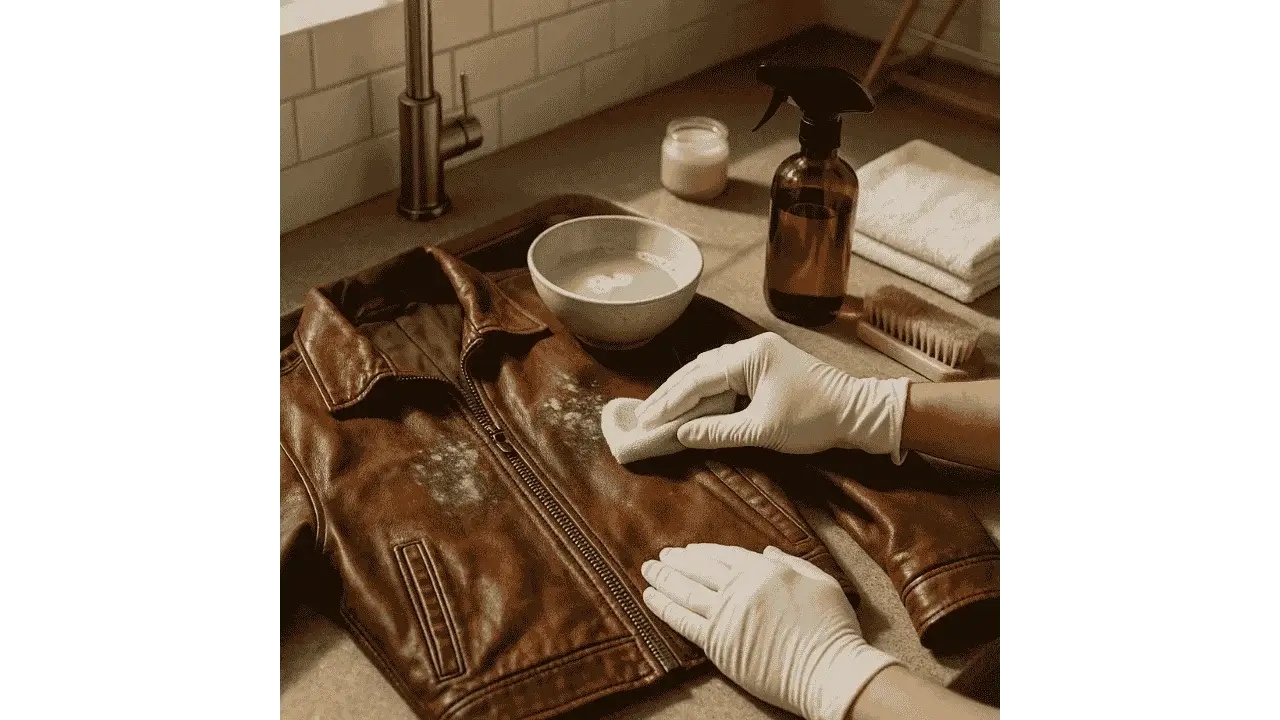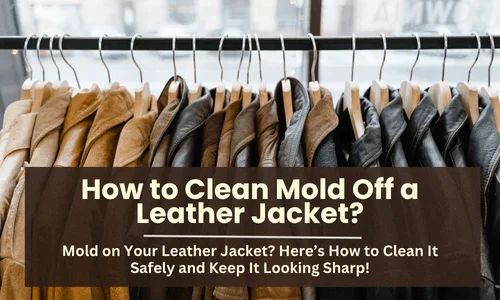If you’ve ever pulled your favorite leather jacket out of storage and found fuzzy white or green patches across it, you’re not alone. Mold is a common problem with leather, especially when it’s stored in damp conditions or worn in humid weather and not properly dried. As someone who’s handled a fair share of leather restorations, I can tell you that the key to saving your jacket lies in quick, careful cleaning. The right method can remove mold without harming the leather’s finish, keeping it both clean and supple for years to come.

Why Mold Happens on Leather Jackets?
Mold tends to show up when a leather jacket is left in damp, dark, or poorly ventilated areas. I’ve come across it most often in jackets stored in humid closets or worn in the rain and never dried properly. Since leather naturally absorbs moisture, it becomes an easy target for mold if you’re not careful with storage and upkeep.
How to Identify Mold on Leather?
Mold usually shows up as green, white, or even black fuzzy patches. It’s more than just dust, you’ll likely notice a musty odor along with it. If you wipe it and it doesn’t come off easily, chances are you’re dealing with mold, not surface dirt. Catching it early can save the jacket from deeper damage.
Learn More: How to Get Creases Out of Leather Jackets?
What to Know Before You Start Cleaning?
Always clean mold off leather in a space with good airflow, preferably outdoors. Mold spores spread easily, and you don’t want them lingering in your home. Wear gloves and a mask to protect yourself while handling the jacket. And most importantly, never soak the leather. Too much moisture just makes things worse.
What You’ll Need
You don’t need anything fancy. A soft cloth, mild soap, white vinegar or rubbing alcohol, and a decent leather conditioner will do the job. If the mold is stubborn, a soft-bristle brush can help loosen it up without scratching the leather. Avoid bleach or anything harsh, that’s a fast way to ruin the jacket.
Step-by-Step: Removing Mold the Right Way
- Wipe Away Loose Spores
Start by gently brushing off any visible mold using a dry cloth or soft brush. Don’t scrub too hard. - Apply the Cleaning Solution
Mix equal parts white vinegar and water, or use rubbing alcohol. Dampen a cloth, don’t soak it, and wipe the moldy spots in circular motions. - Let the Jacket Dry Naturally
After cleaning, hang the jacket in a shaded area with airflow. Skip direct sunlight and heat sources. Let it dry slowly to avoid cracking. - Condition the Leather
Once the jacket is dry, use a leather conditioner to restore moisture and flexibility. This step keeps the leather from drying out and adds a layer of protection.
How to Keep Mold from Coming Back?
Always Dry After Use
Never store your jacket if it’s even slightly damp. Wipe off moisture right away and let it breathe.
Watch Your Storage Space
Use a breathable garment bag and store the jacket in a cool, dry area with some air circulation. Avoid plastic covers and sealed boxes.
Add Moisture Control
Toss a few silica gel packs or moisture-absorbing cloths in the storage area. It helps keep humidity in check.
Routine Checkups
Inspect the jacket now and then. If you spot mold early, you’ll have a much easier time dealing with it.
Final Takeaways
Getting rid of mold on a leather jacket isn’t hard if you act quickly and treat the material with care. Stick to white vinegar or rubbing alcohol, dry the jacket slowly, and follow up with a quality leather conditioner. And remember: keeping your jacket dry and well-stored is the best way to make sure mold never has a chance to take hold in the first place.
- How to Wear an Oversized Leather Jacket? Style Tips for a Casual Look - August 6, 2025
- How to Fold a Leather Jacket? - August 5, 2025
- How Should a Leather Jacket Fit a Woman? - August 1, 2025



